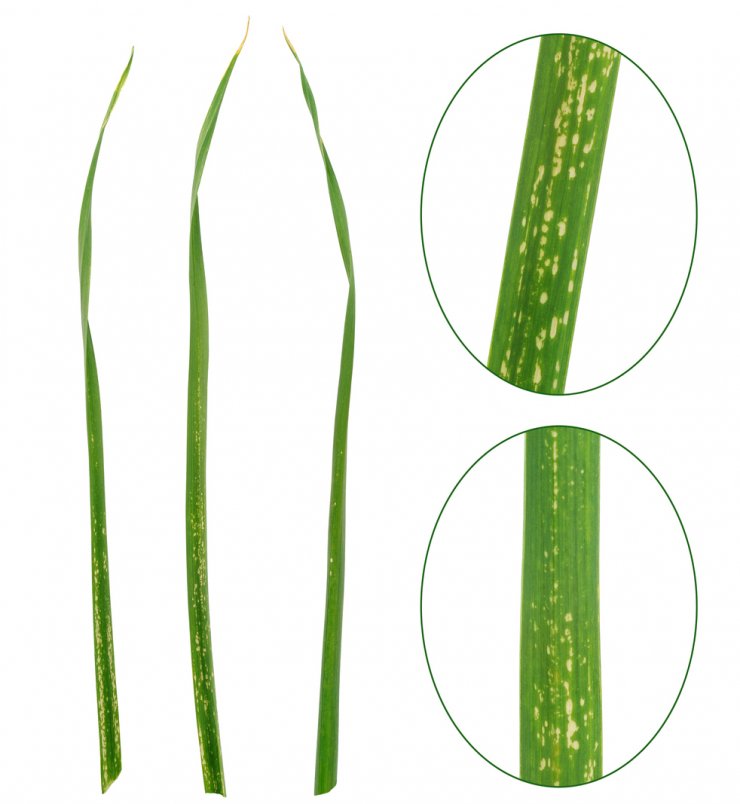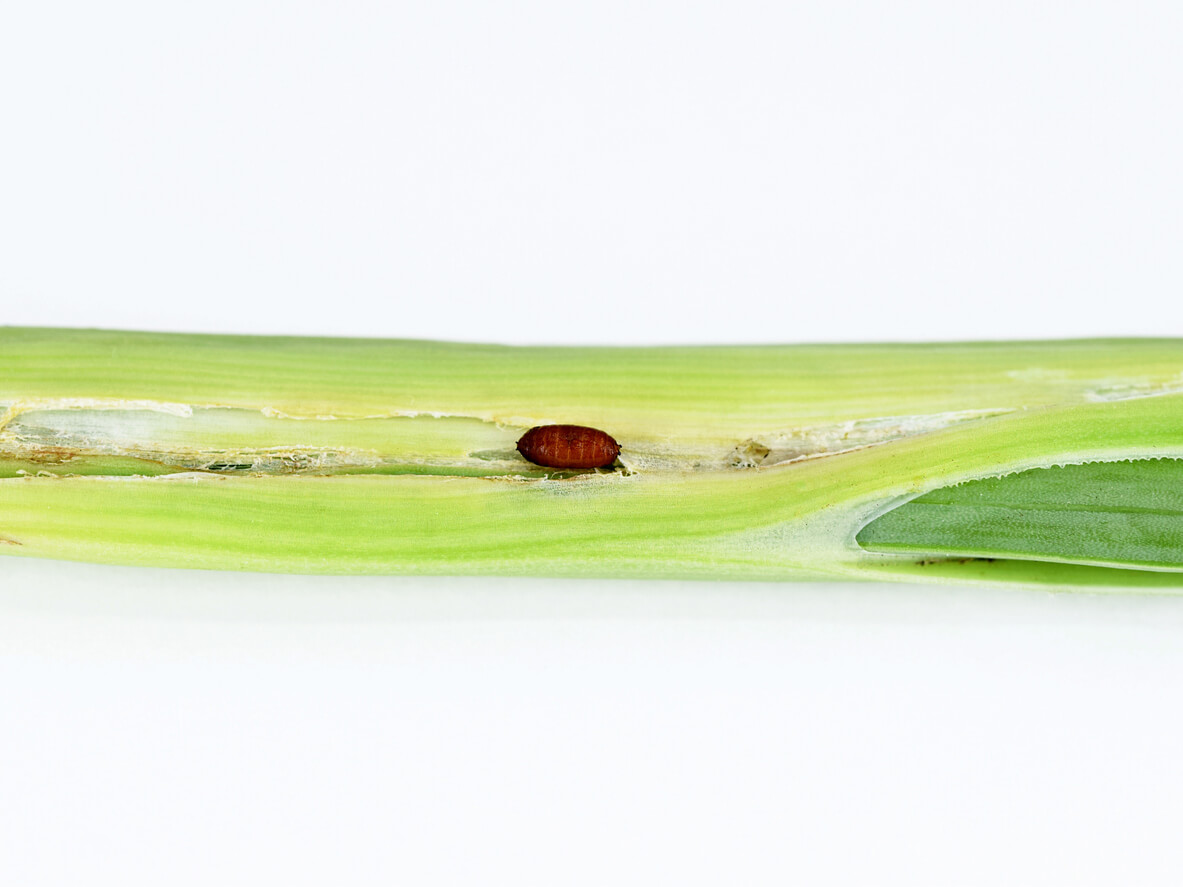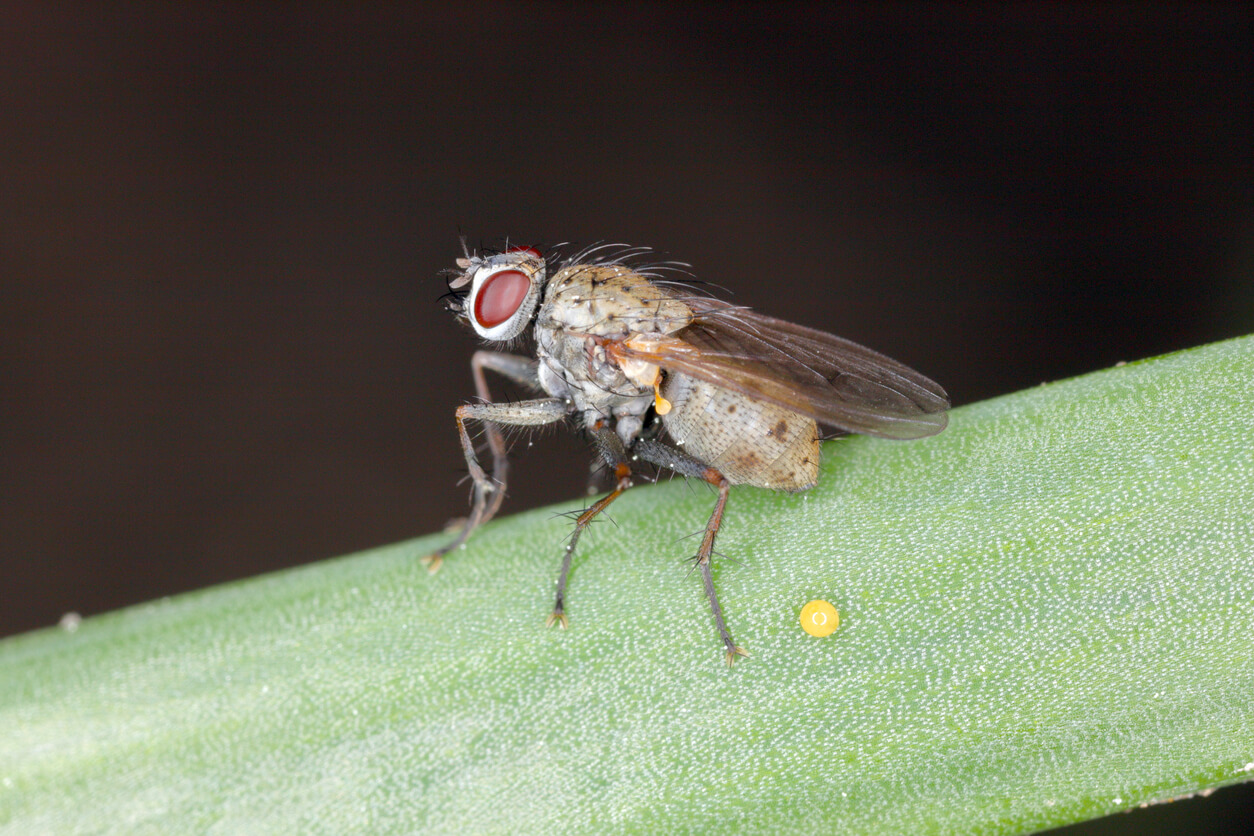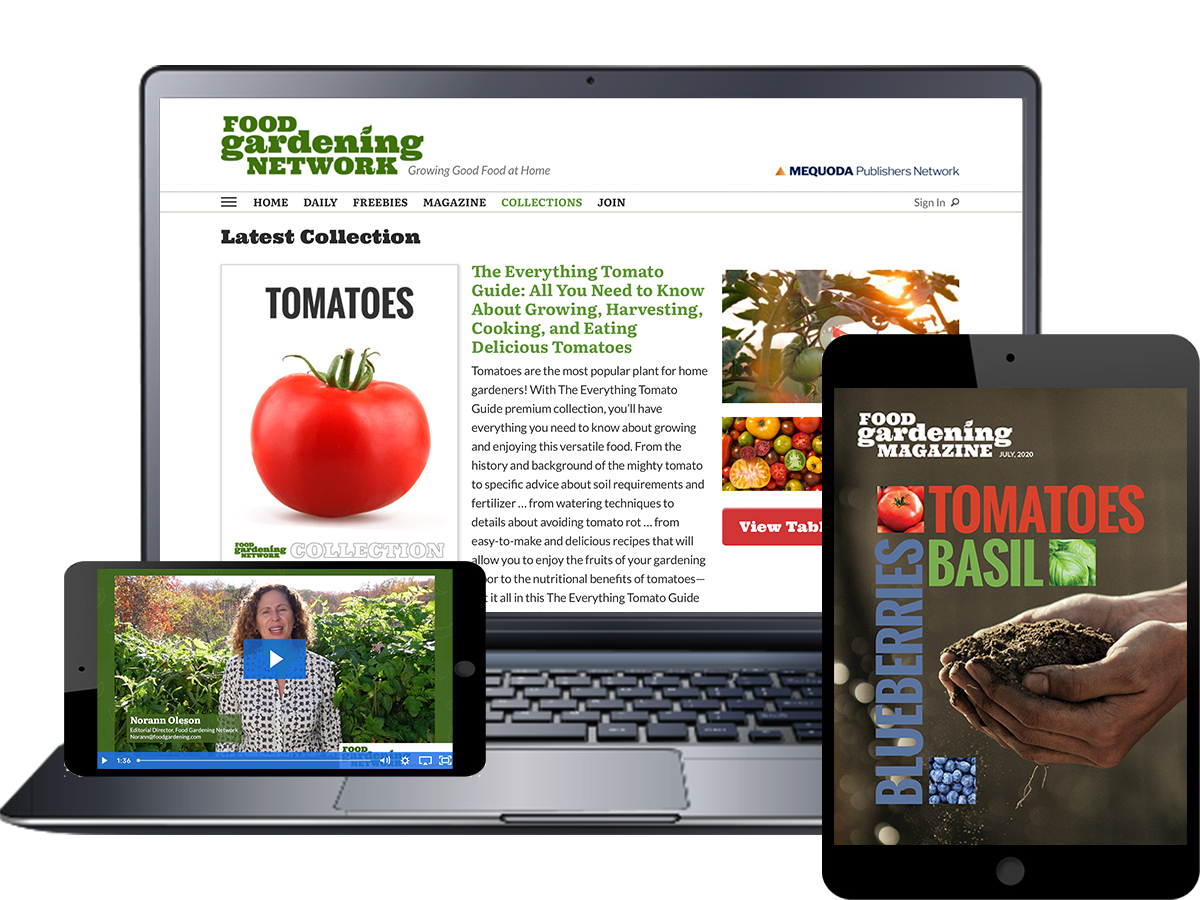
Garlic leaves attacked by leafminers.
Pests in your garlic crop, left unchecked, can damage and destroy your plants. Keeping a close watch on your plants during your regular daily inspections will help you spot any pests before they can do irreparable harm.
A couple notes about prevention:
- Don’t overwater.
- Place sticky traps to catch pests early.
- Set up fencing to deter grazing animals, such as deer and rabbits.
- Sprinkle diatomaceous earth to deter slugs and snails.
Spot the Symptoms of Garlic Pests
Check stems and leaves for these symptoms that come from the most common garlic pests.
| Symptom | Pest |
|---|---|
| Twisted, stunted leaves; raised bumps where the mites are living | Bulb mites |
| Small, curled white eggs on the underside of leaves | Leafminers |
| Wilting and yellow foliage | Garlic bloat nematodes |
| Thick, clear mucus on the surface of your soil that attracts flies | Onion maggots |
| Yellowing and distortion of leaves | Thrips |
Here is some information to help you recognize and treat several common pests that can affect garlic.
Bulb Mites
These tiny critters feed on the bulbs of garlic, living between the layers of the cloves. Signs of bulb mites are twisted, stunted leaves. You may also see little raised bumps where the mites are living.
What to do: Treat bulb mites with a neem oil-based insecticidal oil, which is a great organic product for treating many garden pests and fungi, including mites, aphids, powdery mildew, and white flies.
Leafminers

If you notice small, curled white eggs on the underside of leaves, you’re probably seeing signs of a leafminer infestation. The eggs hatch into maggots that tunnel into the leaves, eating them as they go.
What to do: After planting, install floating row covers. You should also keep the soil around your plants well-weeded and mulched, which will inhibit the spread of leafminers. If you see signs of leafminers in your garlic plants, remove the affected leaves and dispose of them away from your garden. You can also use an organic Spinosad-based insecticide spray to kill leafminers.
Garlic Bloat Nematodes
These are roundworms that feed on the entire garlic plant; you may find them in the leaves, stems, and bulbs of your garlic plants. Signs of these pests include wilting and yellow foliage. These nematodes get their name, garlic bloat, because the affected bulbs can swell, or bloat. Bloated bulbs usually turn soft and brown.
What to do: Nematodes can live in dead plant matter, so keep your garden clear of dead plants and weeds. You should also regularly clean your gardening tools and shoes. You can treat garlic bloat nematodes with a neem oil insecticide spray. It may seem counterintuitive, but there are beneficial nematodes (Steinernema feltiae) that you can introduce into your garden that will kill garlic bloat nematodes.
Onion Fly/ Maggots

Ranging in color from light brown to pale yellow, these hungry pests feed off of onion and garlic plants. You may see this critter sticking out of the ground near your plants, with its head buried deep into the soil. If you see a thick, clear mucus on the surface of your soil that attracts flies, you probably have an onion maggot infestation.
What to do: To prevent onion maggots, plant your garlic later in the season. You can also apply an insecticide spray that is effective against onion maggots, such as Spinosad or hot pepper wax. In addition, you should keep your garden well-weeded, which will help prevent onion maggots from spreading.
Thrips

Thrips are tiny insects that feed on garlic plants, causing yellowing and distortion of leaves. You may also see the adults flying around your garlic plants during the day.
What to do: To control thrips in your garden, apply neem oil insecticide at regular intervals throughout the growing season. You can also try using natural predators, such as ladybugs or lacewings, which will help control thrips without the use of chemicals. Additionally, you should keep your garden well-weeded and mulched to prevent thrips from spreading to new areas.
General Information About Treating Garden Pests
We’re believers in not using toxic materials in the garden—toxic pest treatments can hurt the plants, hurt the soil, and harm you. Here are some proven non-toxic ways to get rid of pests on your garlic plants. Choose the best treatment for the type of pests invading your plants.
Pick off the pests. If you can see the pests, remove them by hand (and use your garden gloves when you do). After removal, destroy pests by drowning them in a bucket of soapy water or crushing them with your foot. Handpicking isn’t efficient or practical for very small pests, but it works well with larger pests.
Apply insecticidal soap. Insecticidal soap is organic, and the potassium salts in insecticidal soap help remove an insect’s protective waxes, causing destruction of insect membranes and killing them. Insecticidal soaps are particularly effective on smaller pests such as aphids, psyllids, and spider mites. Mix the soap with water to create your solution and apply directly to insects on any plants. While insecticidal soap is less apt to affect other organisms, certain plants might be sensitive to the soap and can suffer leaf burn.
Apply horticultural oils. Combine plant- or petroleum-based oils with water to produce horticultural sprays. Neem oil, for instance, is derived from seed extracts of the neem plant. Oil-based sprays block an insect’s air holes, interfere with an insect’s metabolism, disrupt insect feeding, and inhibit insect growth. Like insecticidal soaps, horticultural oils can cause plant injury if not properly diluted.
To make your own homemade neem oil spray, add 1 teaspoon neem oil and 1/2 teaspoon dish soap to 1 quart warm water. Mix well and add to a spray bottle, then spray your affected plants until they’re damp.
Have your garlic plants suffered from any of these pests? How have you treated your plants? Please tell us in the comments below.


 Previous
Previous



